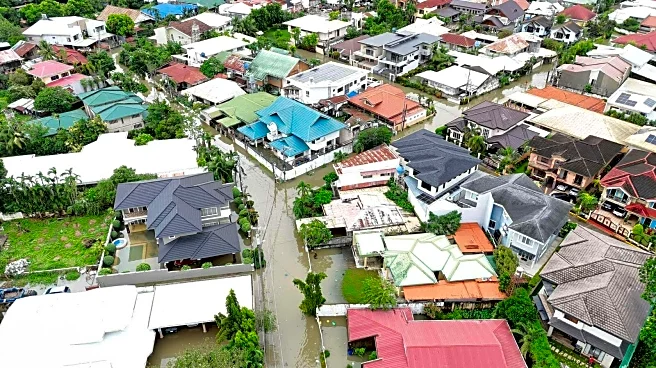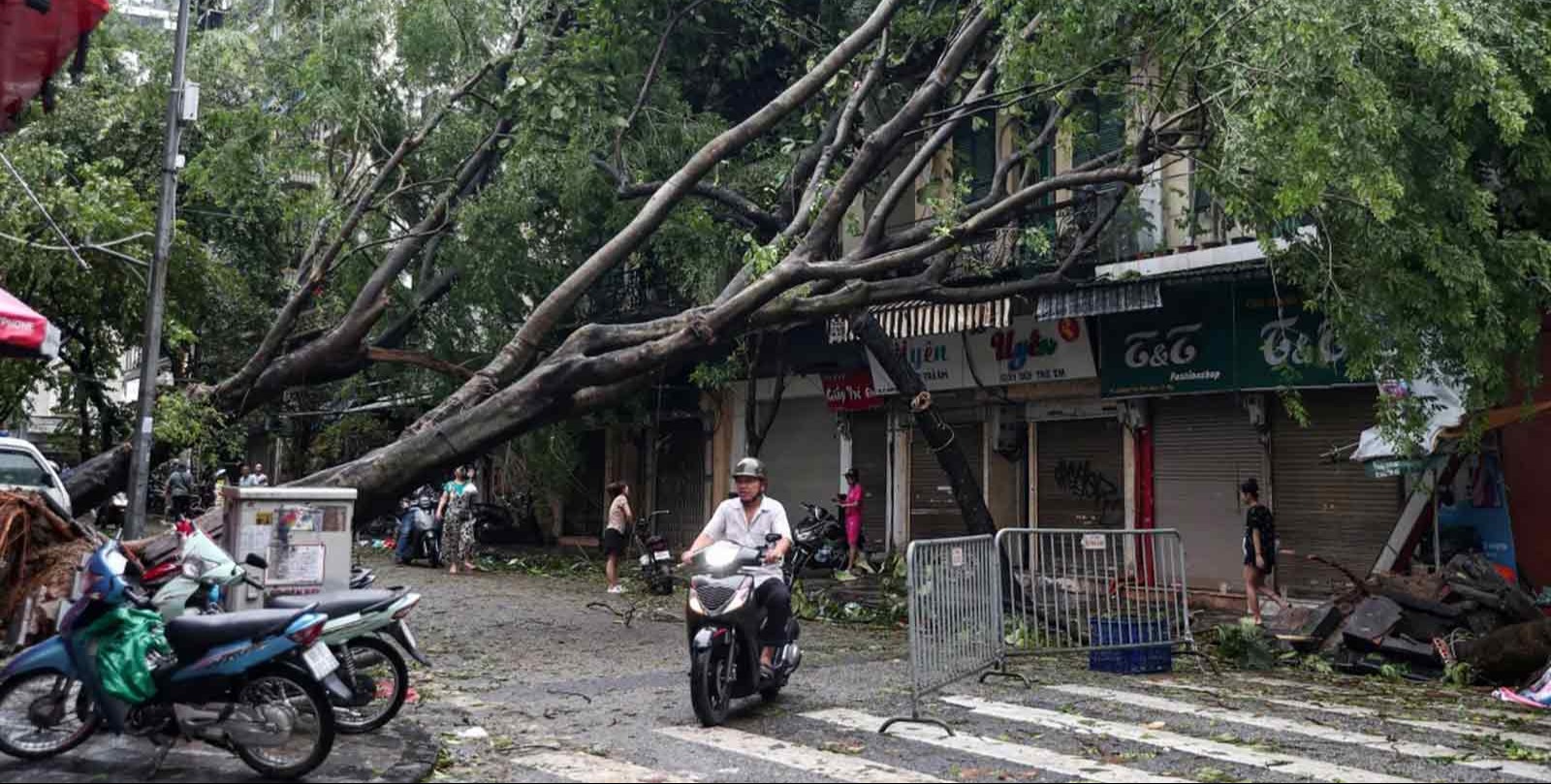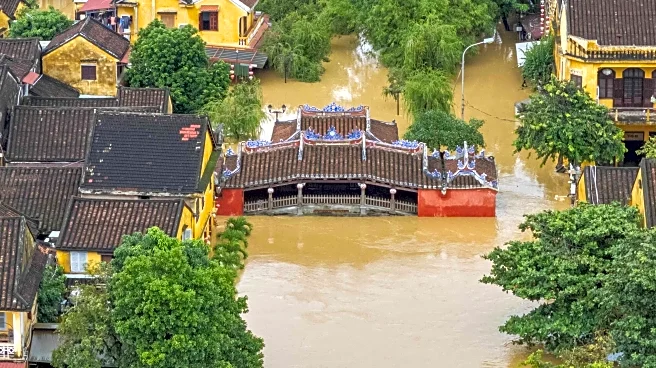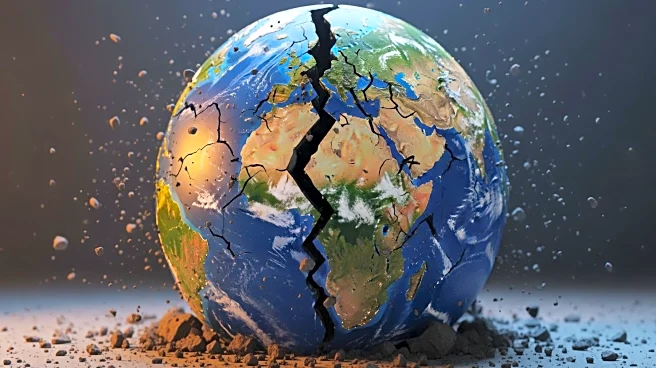What's Happening?
Typhoon Kalmaegi has struck the central Philippines, causing widespread flooding and forcing hundreds of thousands to evacuate. The storm, which made landfall shortly before midnight, has brought winds
of up to 150 kilometers per hour, with gusts reaching 185 kph. The severe weather has resulted in at least two fatalities, including a man killed by a falling tree in Bohol province and an elderly person who drowned in southern Leyte province. The typhoon has left many residents stranded on rooftops, with some evacuation centers also flooded. The storm's impact is exacerbated by the region's vulnerability to natural disasters, as it is still recovering from a 6.9-magnitude earthquake in September.
Why It's Important?
The impact of Typhoon Kalmaegi highlights the ongoing vulnerability of the Philippines to natural disasters, which are becoming more frequent and severe due to climate change. The storm has displaced hundreds of thousands, underscoring the need for improved disaster preparedness and infrastructure resilience in the region. The Philippines, which experiences an average of 20 storms annually, faces significant challenges in protecting its population, particularly those living in poverty. The situation calls for increased international support and investment in climate adaptation measures to mitigate future risks.
What's Next?
As Typhoon Kalmaegi continues its path, further evacuations and emergency responses are expected. The Philippine government and disaster response agencies are likely to focus on providing immediate relief and support to affected communities. Long-term, there may be increased pressure on the government to enhance disaster preparedness and infrastructure resilience. Additionally, the international community may be called upon to assist in recovery efforts and to support climate adaptation initiatives to prevent similar crises in the future.
Beyond the Headlines
The frequent occurrence of severe storms in the Philippines raises ethical and policy questions about global climate responsibility and the need for equitable climate action. The disproportionate impact on vulnerable populations highlights the importance of addressing social inequalities in climate adaptation strategies. Furthermore, the situation may prompt discussions on the role of developed nations in supporting climate resilience in disaster-prone regions.













